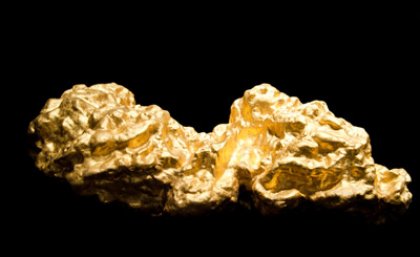
An Australian authored research paper published today in the pre-eminent Nature Geoscience journal is attracting international attention for its findings that demonstrate a link between seismic activity and the precipitation of gold and other trace elements in earthquake fault zones.
Paper co-authors, Dr Dion Weatherley, Senior Research Fellow at The University of Queensland’s Sustainable Minerals Institute, and Prof Richard Henley, Visiting Fellow at The Australian National University’s Research School of Earth Sciences, confirmed the link following a collaborative research project that began just 18 months ago.
According to Dr Weatherley, combining their expertise in geochemistry and seismology disciplines proved to be a critical factor in developing the simple mathematical model that would test Dr Henley’s hypothesis about the speed at which precipitation of gold and quartz occurs.
“While geochemical and geological evidence has long alluded to a connection between earthquakes and the deposition of gold, there has been much debate through the decades as to whether the precipitation of gold was a slow, equilibrium process or whether, as Professor Henley was proposing, it was a rapid and far from equilibrium process,” Dr Weatherley said.
The mathematical model developed through the research process suggests that seismic activity could be one of the primary mechanisms for the formation of economical and mineable ore deposits, according to Dr Weatherley.
“The most surprising finding we made was that even very small magnitude earthquakes of four and smaller can generate sufficient pressure reduction within fault jogs to initiate flash precipitation of gold and quartz during the earthquake itself,” Dr Weatherley said.
“While the amount of gold that would be deposited in any one earthquake is quite small, when you consider that tens or hundreds of magnitude four quakes and thousands of smaller magnitude quakes may occur each year within an earthquake fault system, the possibility exists that over time, large gold deposits may result.”
The research findings challenge traditional mine geologic thinking around the formation of quartz veins under equilibrium conditions, rather suggesting a more rapid process that goes on to deposit gold in fault zones. Not surprisingly, the findings have attracted great interest from the geosciences community.
“We are hopeful that any deeper understanding we can gain about the physical processes that form ore bodies may help exploration geologists find new mineable gold and other mineral deposits,” Dr Weatherley said.
“Most of the world’s ore deposits that are exposed at the earth’s surface have either been found or already mined. Our research paper aims to reveal new findings and knowledge about the physical processes that will assist exploration geologists to discover blind ore deposits that are deeper within the earth.”
Dr Weatherley and Dr Henley’s paper can be downloaded here.
Media, and to to arrange an interview with Dr Weatherley: Janelle Kirkland, UQ Communications, 07 3346 0561.
About Dr Dion Weatherley
Dion Weatherley is a computational geophysicist who is internationally recognised as an expert in computer model development and numerical simulations. He was awarded a PhD in Theoretical Geophysics in 2002 for research on the physical underpinning for intermediate-term earthquake forecasting. Subsequently he led a research team developing physics-based computer models for earthquake rupture and fault system interactions. More recently he has undertaken research with the Sustainable Minerals Institute, utilising supercomputer simulations to understand fragmentation and granular media flow in underground mass-mining operations and minerals processing.
About the W.H.Bryan Mining and Geology Research Centre (BRC)
The mining resources of the Sustainable Minerals Institute (SMI) are centrally located within the W.H.Bryan Mining and Geology Research Centre (BRC).
The BRC brings together significant intellectual and operational skills that offer integrated thinking across the mining value chain with expertise in mass mining, blasting fundamentals, geotechnical engineering, orebody and numerical modelling, geology and geostatistics, mine operation optimisation and software design as well as applied blast engineering. Established in 1991, the BRC conducts research to reduce geological and mining risk, and to optimise mining procedures to meet the complex challenges facing the global mining sector. The Centre delivers strategic technologies and engineering solutions, in pursuit of effective and sustainable industry practice. For further information see www.brc.uq.edu.au
About SMI
SMI is one of eight research institutes within The University of Queensland. The Sustainable Minerals Institute is made up of seven research centres whose disciplinary roots lie in people, environment and production. Established in 2001, the Institute’s research covers all facets of mining from exploration to site rehabilitation. The Institute has approximately 350 staff including 100 postgraduate students. For more information go to www.smi.uq.edu.au
About The University of Queensland
SMI is one of eight research institutes within The University of Queensland, which is one of Australia’s premier learning and research institutions. Measured through a combination of three key global university rankings — The Times Higher Education, Shanghai Jiao Tong and QS World University — UQ is currently ranked in the top 100 of all universities worldwide. For further information see www.uq.edu.au.
.jpg)











